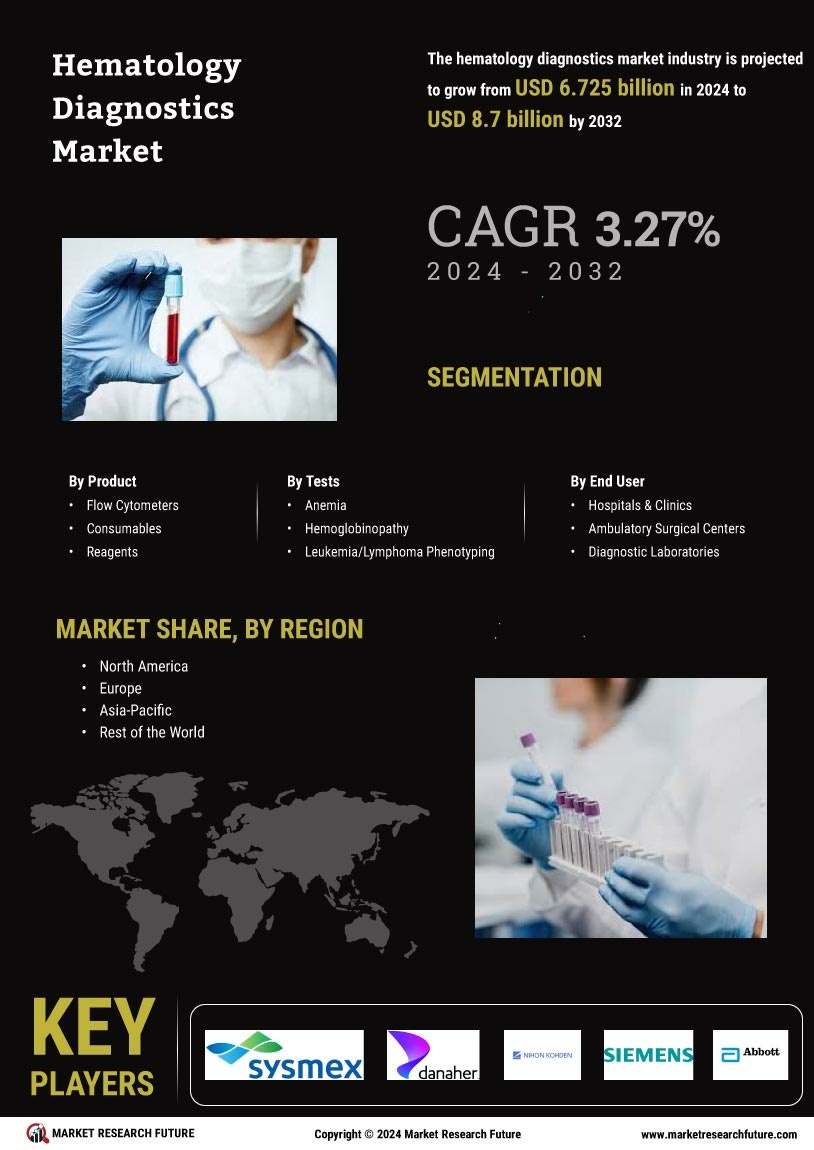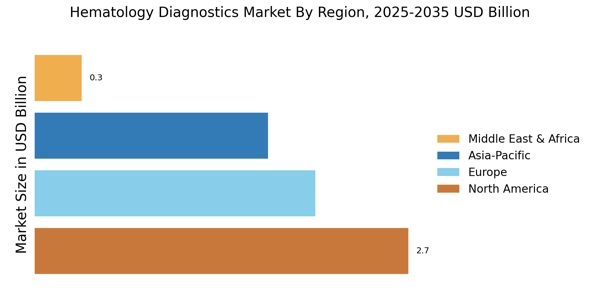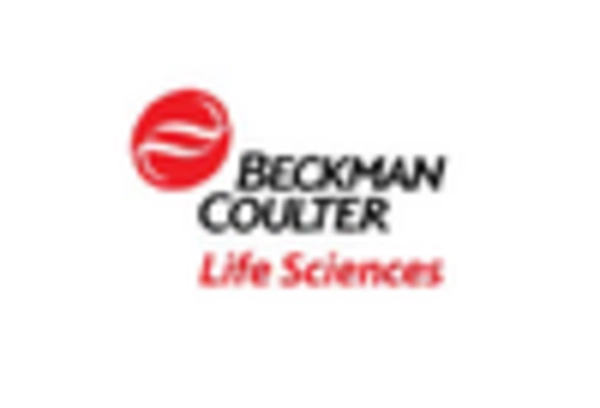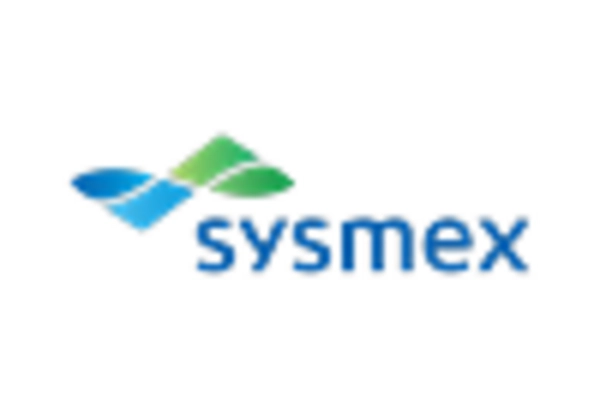Growing Demand for Personalized Medicine
The shift towards personalized medicine is significantly influencing the Hematology Diagnostics Market. Personalized medicine tailors treatment strategies based on individual patient profiles, including genetic, environmental, and lifestyle factors. This approach is particularly relevant in hematology, where understanding the genetic basis of disorders can lead to more effective therapies. The market is witnessing an increasing demand for diagnostic tests that can identify specific biomarkers associated with hematological conditions. As healthcare providers aim to deliver targeted therapies, the need for advanced diagnostic tools that facilitate personalized treatment plans is expected to rise. This trend not only enhances patient outcomes but also drives the growth of the Hematology Diagnostics Market, as stakeholders invest in innovative diagnostic solutions.
Rising Prevalence of Hematological Disorders
The increasing incidence of hematological disorders, such as anemia, leukemia, and lymphoma, is a primary driver of the Hematology Diagnostics Market. According to recent estimates, the prevalence of anemia alone affects approximately 1.62 billion people worldwide, highlighting a substantial need for effective diagnostic solutions. This growing patient population necessitates advanced diagnostic tools to ensure timely and accurate detection of blood-related conditions. As healthcare systems strive to improve patient outcomes, the demand for hematology diagnostics is expected to rise significantly. Furthermore, the aging population is more susceptible to these disorders, further amplifying the market's growth potential. The Hematology Diagnostics Market is thus positioned to expand as healthcare providers seek innovative solutions to address these pressing health challenges.
Technological Innovations in Diagnostic Tools
Technological advancements in hematology diagnostics are transforming the landscape of the Hematology Diagnostics Market. Innovations such as automated analyzers, point-of-care testing devices, and advanced imaging techniques are enhancing the accuracy and efficiency of blood tests. For instance, the introduction of next-generation sequencing technologies has revolutionized the detection of genetic mutations associated with hematological malignancies. These innovations not only improve diagnostic precision but also reduce turnaround times, which is crucial for effective patient management. The market is witnessing a surge in demand for these sophisticated tools, as healthcare providers increasingly adopt technology-driven solutions to enhance diagnostic capabilities. As a result, the Hematology Diagnostics Market is likely to experience robust growth fueled by continuous technological evolution.
Rising Awareness and Education on Blood Disorders
The increasing awareness and education regarding blood disorders are pivotal in driving the Hematology Diagnostics Market. Public health campaigns and educational initiatives are informing populations about the symptoms and risks associated with hematological conditions. This heightened awareness encourages individuals to seek medical attention and undergo diagnostic testing, thereby increasing the demand for hematology diagnostics. Additionally, healthcare professionals are being trained to recognize and address these disorders more effectively, further contributing to market growth. As awareness continues to rise, the Hematology Diagnostics Market is likely to experience a surge in demand for diagnostic tools and services, as early detection and intervention become paramount in managing blood-related health issues.
Increasing Investment in Healthcare Infrastructure
The expansion of healthcare infrastructure is a crucial driver for the Hematology Diagnostics Market. Governments and private entities are investing significantly in healthcare facilities, particularly in emerging economies, to improve access to diagnostic services. This investment is aimed at enhancing laboratory capabilities, increasing the availability of advanced diagnostic equipment, and training healthcare professionals. As healthcare systems evolve, the demand for hematology diagnostics is likely to grow, driven by the need for comprehensive diagnostic services. Furthermore, the establishment of specialized hematology centers is expected to contribute to market growth, as these facilities focus on providing advanced diagnostic solutions. Consequently, the Hematology Diagnostics Market stands to benefit from these infrastructural developments, which are essential for meeting the rising demand for hematological testing.


















Leave a Comment